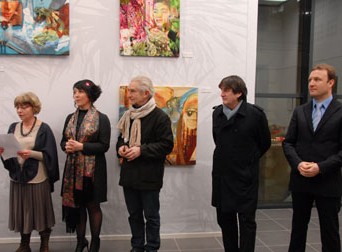Protecting Users Without Silencing Voices
페이지 정보
작성자 YW 작성일25-11-17 07:08 (수정:25-11-17 07:08)관련링크
본문

The internet has revolutionized how we exchange ideas, disseminate knowledge, and seek truth. It has given a voice to the voiceless and fueled global activism. But with this digital influence comes a critical question: How do we protect people from abuse while upholding the right to free expression? This is the core conflict at the heart of the debate over digital moderation and open communication.
On one side, there are tangible risks that must be addressed. Hate speech, targeted abuse, incitement to harm, and the dissemination of false narratives can trigger public crises. Children may be confronted with harmful imagery. vulnerable populations are driven offline by hostility. dangerous falsehoods can incite civil unrest or bokep indo riots. Many argue that platforms carry a social responsibility—and sometimes a regulatory requirement—to remove, limit, or flag such content.
On the other side, censorship can serve authoritarian agendas. When governments determine which voices are acceptable, they risk suppressing truth. What one person views as dangerous, another sees as truth-telling. Journalists and digital participants have relied on the open internet to uncover hidden truths, organize protests, and amplify ignored voices. Overly broad rules often lead to the erasure of valid perspectives under the claim of compliance.
The issue extends beyond what is removed to on what basis. Many platforms use algorithmic moderation that misinterpret tone and intent. A ironic comment about violence may be flagged as a threat. A image of a demonstration might be wrongly labeled dangerous. trust and safety teams are often inconsistently supervised. Without clarity, users have no recourse of why their content was restricted.
Finding equilibrium means acknowledging inherent trade-offs. It demands transparent moderation policies. It requires third-party audits and accessible dispute mechanisms. It means engaging diverse global voices in policy design so rules embody cultural diversity. media awareness also plays a vital role: empowering users to identify misinformation without defaulting to censorship can strengthen democratic discourse.
Some nations have implemented radical policies: either tolerating all content or banning all criticism. Either model proves sustainable over time. The goal must not be total freedom that ignores harm nor absolute authority over speech. It must be a framework that upholds rights—one that preserves the right to speak even when the message is controversial.
As technology advances, our approach must grow with it. We need enforceable ethical standards, rights-respecting legislation, and democratic engagement. The internet is too foundational to be shaped by political whims. Balancing censorship and freedom of expression is not an either. It is about building a digital public square that is both safe and open.
댓글목록
등록된 댓글이 없습니다.

